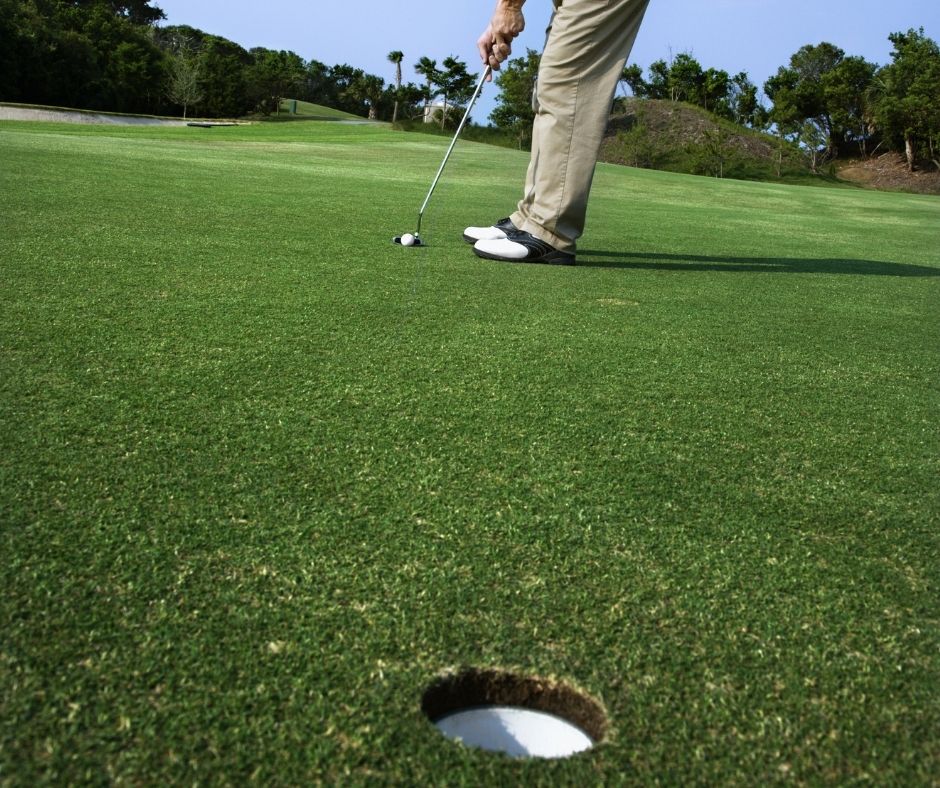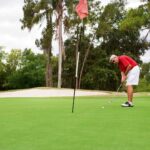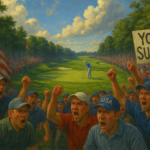Join Our Senior Golfers Newsletter!
Sign up today and receive your free Golf After 60 Bonus Stretch Guide!
Golf is a timeless sport that offers endless opportunities for enjoyment and improvement, regardless of age. For senior golfers, the game presents a unique set of challenges and opportunities, requiring adjustments and strategies to ensure continued success on the fairways and greens. In this comprehensive guide, we’ll explore a wealth of senior golf swing tips and insights specifically tailored for senior golfers, designed to enhance performance, prevent injury, and maximize enjoyment on the course. Senior Golf Swing Tips.

Senior Golf Swing Tips: Mastering the Fairways and Greens
As we age, it’s essential to acknowledge and respect the changes that occur in our bodies. Senior golfers may experience decreased flexibility, diminished strength, and reduced mobility compared to their younger counterparts. Recognizing these physical limitations is the first step toward adapting your game to ensure continued success and enjoyment. Consider consulting with a fitness professional or physical therapist to develop a personalized exercise regimen that addresses specific areas of weakness or stiffness.
Flexibility and mobility are crucial aspects of a successful golf game, particularly for senior players. Incorporating regular stretching exercises into your routine can help improve range of motion in key areas such as the hips, shoulders, and spine. Focus on dynamic stretches that mimic the movements of the golf swing, as well as static stretches to increase flexibility and reduce the risk of injury. Yoga and Pilates are also excellent options for improving flexibility and core strength, both of which are essential for generating power and maintaining balance in your golf swing.
As we age, it’s natural for our golf swings to evolve to accommodate changes in strength, flexibility, and mobility. Senior golfers may find it beneficial to shorten their backswing and focus on generating power from the rotation of the hips and shoulders rather than relying solely on arm strength. Experiment with different grip styles, stances, and ball positions to find what works best for your body and swing characteristics. Consider working with a qualified golf instructor who can provide personalized feedback and guidance to help you refine your technique.
While hitting the ball long distances off the tee is certainly impressive, accuracy and consistency are far more important for senior golfers. Focus on hitting fairways and greens in regulation rather than trying to outdrive your playing partners. Consider using a higher lofted driver or fairway woods to increase the likelihood of finding the fairway off the tee. Prioritize accuracy and course management over raw power, and you’ll find that your scores improve significantly as a result.

The short game is often referred to as the “scoring game” in golf, and it becomes increasingly important as we age. Senior golfers may struggle to generate the same power and distance with their longer clubs, making proficiency around the greens essential for success. Dedicate ample time to practicing chipping, pitching, and putting, as these skills can save you strokes and lower your scores dramatically. Focus on developing a consistent putting stroke and mastering distance control on your chips and pitches to become a more well-rounded player.
Golf is as much a mental game as it is physical, and maintaining a positive mindset is crucial for success on the course. Senior golfers may encounter challenges such as slower swing speeds, shorter distances, and occasional aches and pains, but it’s important not to let these obstacles deter you from enjoying the game. Focus on the aspects of your game that you can control, such as your attitude, effort, and course management strategies. Practice visualization techniques to picture successful shots before you hit them, and cultivate a resilient mindset that allows you to bounce back from setbacks with grace and determination.
As we age, it’s important to recognize our limitations and adjust our approach to the game accordingly. Senior golfers may not be able to practice and play with the same frequency or intensity as they once did, but that doesn’t mean you can’t continue to improve and enjoy the game. Prioritize quality over quantity in your practice sessions, focusing on specific areas of your game that need improvement rather than trying to perfect every aspect of your swing. Be mindful of your energy levels and avoid overexerting yourself on the course, especially on hot or humid days. Remember, golf is meant to be enjoyed, so don’t be afraid to take a step back and appreciate the beauty of the game and the camaraderie of your fellow players.
Golf is a sport that can be enjoyed for a lifetime, and senior golfers have a wealth of opportunities to continue improving and excelling on the course. By understanding and adapting to the physical changes that come with age, prioritizing flexibility and mobility, refining your swing mechanics, and focusing on accuracy and consistency over raw power, you can elevate your game and maximize your enjoyment of this timeless sport. Remember to stay mentally sharp, play smart, and above all, have fun out there on the fairways and greens. With these expert tips and insights, you’ll be well on your way to mastering the game of golf and enjoying many more years of success and satisfaction on the course.

Putting Drills & Tips
Golf Lessons For The Flat Stick by Golf Distillery
In this section of the site, we’ll focus on what I truly believe is the most important club in the bag… the putter.The putting tips and lessons below cover good putting fundamentals such as alignment and stance, the putting stroke, the putting grip, reading greens and distance control. I’ve also included some putting drills and games so that you can make the most of your time when you practice putting.

How Many Putts Do You Take?
I don’t think most golfers appreciate just how many shots they are throwing away with their putter. If you want to better your scores on the golf course and lower your handicap as quickly as possible – improve your putting.

The distance from the hole for your first putt is always determined by the quality of your approach.
Sure, you will sometimes be able to put your ball within 10 feet for a real chance at birdie. But more often than not you will be faced with putt distances where the odds are against you. Instead of going for it every time it may be best to take your medicine and protect your par from a three-putt bogey rather than going for the one-putt birdie.
Follow these steps to practice your lag putting:

Target the Very Center of the Cup Drill
Harvey Penick used to say that golfers should take dead aim. While he may have been talking about golf shots using longer clubs and full swings that saying can certainly also apply to putting.
Indeed, rather than aiming at the general direction of the hole it can be quite useful to aim at the very center of the hole. That way, missing that very precise target can still result in holed putts.
Follow these steps in order to make a precise target in the middle of the hole:
If you want to make sure not to damage the inside of the cup as prescribed or if there is a hard plastic liner preventing you from doing so there is an easy alternative. Indeed, practice your putting as you normally would on the putting green but instead of aiming at the holes simply aim at a tee (or tees) that you previously inserted into the ground. Imagine that you must hit the tee in order for the putt to count as made. Any putt that missed the tee can be deemed not to fall in.
Performing this putting drill will train you to focus and aim at a very specific target. This is in contrast to aiming at the general direction of the hole. Picking a smaller target will get you to really apply yourself to make sure you hit a great putt and that the line you picked was the correct one. And best of all, when you take that focus onto the golf course and when you miss that small target your putts may still fall into the hole nonetheless.




